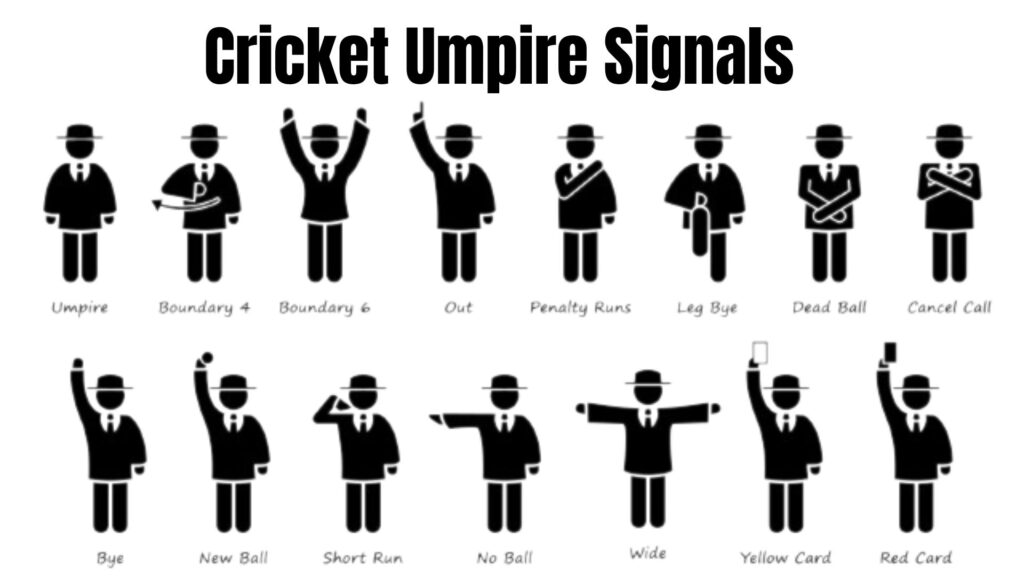
Cricket, often dubbed as the ‘gentleman’s game,’ is a sport filled with traditions, rules, and intricacies. One of the most crucial aspects of a cricket match is the communication between the umpires and the players. Umpires use a range of signals to convey decisions and information during the game. In this article, we will decode cricket umpire signals, shedding light on what these gestures mean and how they impact the game.
Understanding the Role of Umpires in Cricket
Before delving into the signals, it’s essential to comprehend the significance of umpires in cricket. Umpires are responsible for ensuring fair play, making critical decisions, and maintaining the game’s integrity. Their signals are vital in conveying these decisions to players, spectators, and even those watching at home.
Hand Signals ( Cricket Umpire Signals)
1. Out – Raised Finger
One of the most iconic signals in cricket is the raised index finger, which signifies that a batsman is out. This can happen due to various reasons, such as being bowled, caught, or leg before wicket (LBW).
2. Not Out – No Raised Finger
Conversely, when the umpire doesn’t raise the finger, it means the batsman is not out, and they can continue their innings.
Leg Umpire Signals ( Cricket Umpire Signals)
3. Leg Bye – Tapping Leg
If the ball touches the batsman’s body or clothing and no runs are scored off the bat, the umpire taps their leg to signal ‘leg bye.’
4. Wide Ball – Outstretched Arms
When the bowler delivers a ball too far away from the batsman, the umpire extends both arms horizontally to indicate a wide ball.The team that bats gets to keep the extra runs.
Boundary Signals ( Cricket Umpire Signals)
5. Four – Pointing Arm
When the ball crosses the boundary without bouncing, the umpire points their arm towards the boundary to indicate a four.
6. Six – Both Arms Raised
For a maximum score of six runs, the umpire raises both arms above their head, creating a visual spectacle on the field.
Special Signals ( Cricket Umpire Signals)
7. Dead Ball – Crossing Arms
In situations where the ball becomes unplayable or if there’s interference, the umpire crosses their arms to signal a dead ball.
8. Bye and Leg Bye – Touching Shoulders
To indicate byes or leg byes, the umpire touches their opposite shoulders. Byes are scored when the ball misses both the bat and the batsman, while leg byes are awarded when it hits the batsman’s body or clothing.
TV Umpire Signals ( Cricket Umpire Signals)
9. Decision Pending – Making a Box
With the advent of technology, cricket introduced the TV umpire. When a decision is under review, the on-field umpire makes a square box gesture to indicate the involvement of the TV umpire.
The Impact of Umpire Signals on the Game
Umpire signals are not merely symbolic gestures; they have a significant impact on the flow and outcome of a cricket match. Correct decisions ensure fairness, while incorrect ones can lead to controversies and debates.
These signals create a language understood by players and fans alike, enhancing the transparency of the game. They add drama and excitement, especially in close calls, where the fate of a match can hinge on an umpire’s judgment.
Conclusion
In the world of cricket, umpire signals are the silent yet powerful communicators that dictate the course of the game. They embody the spirit of fairness and sportsmanship that cricket prides itself on. Understanding these signals is essential for every cricket enthusiast, as they bring a deeper level of engagement to the sport.
FAQs
- What happens if a player disagrees with an umpire’s decision?
- Players can express their disagreement but must do so respectfully. They can challenge decisions through a review system, but this is limited.
- Why do umpires use hand signals instead of verbal communication?
- Hand signals are universal and eliminate language barriers. They ensure clarity and avoid misunderstandings.
- Can umpire signals be challenged through technology?
- Yes, some decisions can be reviewed using technology, but not all. It depends on the specific rules and regulations of the match.
- Do umpires undergo special training for signaling?
- Yes, umpires receive extensive training to ensure consistency and accuracy in their signals.
- How do umpires communicate with each other during a match?
- Umpires use signals and non-verbal cues to communicate discreetly on the field, ensuring seamless decision-making.
Cricket umpire signals are a fascinating aspect of the sport, adding layers of complexity to an already intricate game. As you watch the next cricket match, pay close attention to these signals, and you’ll gain a deeper appreciation for the role they play in shaping the destiny of teams on the field.
WANT TO KNOW HOW YOU CAN BUY CRICKET KIT IN 500? ….CLICK HERE. For more News About Cricket Follow ICC Cricket.
